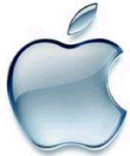February 24, 2005
IBM throws weight behind multi-OS push | CNET News.com
IBM has quietly added a new option to the suddenly vogue market for "hypervisor" software that lets a computer run multiple operating systems simultaneously, CNET News.com has learned.
But Big Blue's efforts aren't likely to squash a potential rival just flexing its muscles.
IBM has released source code for its Research Hypervisor, or rHype, on its Web site, letting anyone examine the approach of a company renowned for its expertise in the field. One distinguishing feature: rHype works with multiple processor varieties, including IBM's Power family, widely used x86 chips such as Intel's Xeon, and the new Cell microprocessor codeveloped by IBM, Sony and Toshiba.
Full Story at CNET News.com
Nintendo Revolution???
 Is this a leaked picture of the Nintendo Revolution? That's the story this morning... circular huh? They look like mock-ups to me. The question is are they Nintendo's mock-ups or some bored photoshoppers mock-up.
Is this a leaked picture of the Nintendo Revolution? That's the story this morning... circular huh? They look like mock-ups to me. The question is are they Nintendo's mock-ups or some bored photoshoppers mock-up.
February 23, 2005
Big Xbox Replacement Cord
 The Xbox replacement cord is a bit bigger than the original. Now it's packing its own surge protector stamped with a warning: This Xbox Protection Cord disconnects power to the Xbox console if it detects an electrical problem. [Joystiq]
The Xbox replacement cord is a bit bigger than the original. Now it's packing its own surge protector stamped with a warning: This Xbox Protection Cord disconnects power to the Xbox console if it detects an electrical problem. [Joystiq]
February 22, 2005
Star Wars Episode 3 Screenshots - Has Been Removed
 "The entire story of Star Wars: Episode 3, laid out in about 80 screenshots from the film. Hurry and check it out before LucasArts sues the poor guy. Warning, the page contains about 6 MB of images." - Update - This site has been removed for some reason, possibly traffic?
"The entire story of Star Wars: Episode 3, laid out in about 80 screenshots from the film. Hurry and check it out before LucasArts sues the poor guy. Warning, the page contains about 6 MB of images." - Update - This site has been removed for some reason, possibly traffic?
Landspeeder built out of modded Harley on eBay
 Gary is selling his custom-built Land Speeder replica on eBay:
This Landspeeder is built on top of a three-wheel Harley Davidson golf kart and seats two; there's room for you and your droid, Wookie or Jedi Master. This Landspeeder is perfect for driving around the local golf course or your lot. You could also take it to Burning Man 2005! It's loaded with features!
* Built in talking car alarm with remote (says "System armed"; "System dis-armed" and "I've been tampered with!")
* Built in PA system for yelling out things like "This is not the vehicle you're looking for, officer!"
* Built in 70 watt audio amplifier and forward-facing 6 X 9 speakers for hooking up your MP3 player to blast out John Williams' excellent "Star Wars" theme!!
* 350 watt - 110 volt AC Inverter! Perfect for plugging in a laptop in so you can surf the web, on the golf course!
* Headlights, LED rear lights and incadescent side marker lights!
* Animated engines pods containing hundreds of LED and incadescent lights!
* Rope lighting!
* Comes with handy "drink and drive" ice chest which fits behind the seat!
* Powered by a 2 cycle Harley Davidson engine! Has forward and reverse!
* Comes with gas can and 2 cycle oil
* Comes with Two (count 'em) TWO animated light sabers!
* Comes with spare tire and extra Drive Belt
* includes loads of bumper stickers which say things like "Ewoks - it's what's for dinner" and "My kid light-sabered your honor student at Jedi Academy"
[Link]
Gary is selling his custom-built Land Speeder replica on eBay:
This Landspeeder is built on top of a three-wheel Harley Davidson golf kart and seats two; there's room for you and your droid, Wookie or Jedi Master. This Landspeeder is perfect for driving around the local golf course or your lot. You could also take it to Burning Man 2005! It's loaded with features!
* Built in talking car alarm with remote (says "System armed"; "System dis-armed" and "I've been tampered with!")
* Built in PA system for yelling out things like "This is not the vehicle you're looking for, officer!"
* Built in 70 watt audio amplifier and forward-facing 6 X 9 speakers for hooking up your MP3 player to blast out John Williams' excellent "Star Wars" theme!!
* 350 watt - 110 volt AC Inverter! Perfect for plugging in a laptop in so you can surf the web, on the golf course!
* Headlights, LED rear lights and incadescent side marker lights!
* Animated engines pods containing hundreds of LED and incadescent lights!
* Rope lighting!
* Comes with handy "drink and drive" ice chest which fits behind the seat!
* Powered by a 2 cycle Harley Davidson engine! Has forward and reverse!
* Comes with gas can and 2 cycle oil
* Comes with Two (count 'em) TWO animated light sabers!
* Comes with spare tire and extra Drive Belt
* includes loads of bumper stickers which say things like "Ewoks - it's what's for dinner" and "My kid light-sabered your honor student at Jedi Academy"
[Link]
Brainbar fix me a (What am I thinking)?
 Brainbar is a mechanical bar that mixes drinks adapted to the visitor's brainwaves. The customer wears a sensor-studded headband and the robot bartender reads the brain frequencies(electroencephalogram) in the alpha and beta wavelength. These wavelengths are generally considered to indicate the states of relaxation and activity in the mind.
Depending on how the bar is tuned it will then mix a drink to enhance or suppress the guest's feelings. BrainBar is a kind of manipulator that gives a party its perfect state of enhanced socialising, adjusting the drinks so that every guest stays within acceptable parameters for a "good" behaviour or, if the settings allow, a "bad" one.
The project explores how much a person is prepared to submit to external forces and how far s/he can allow a machine to intrude on the body.
Brainbar is a mechanical bar that mixes drinks adapted to the visitor's brainwaves. The customer wears a sensor-studded headband and the robot bartender reads the brain frequencies(electroencephalogram) in the alpha and beta wavelength. These wavelengths are generally considered to indicate the states of relaxation and activity in the mind.
Depending on how the bar is tuned it will then mix a drink to enhance or suppress the guest's feelings. BrainBar is a kind of manipulator that gives a party its perfect state of enhanced socialising, adjusting the drinks so that every guest stays within acceptable parameters for a "good" behaviour or, if the settings allow, a "bad" one.
The project explores how much a person is prepared to submit to external forces and how far s/he can allow a machine to intrude on the body.
Xbox 360 News
 Engadget is reporting that the Xbox 360 is definitely going to come with wireless controllers; and that it's going to have an optional hard drive that attatches to the top of the Xbox 360 "in a really slick way, almost like the hood scoop on a muscle car." So you will be able to add the hard drive later insinuating there will be at least two versions of the Xbox 360.
Engadget is reporting that the Xbox 360 is definitely going to come with wireless controllers; and that it's going to have an optional hard drive that attatches to the top of the Xbox 360 "in a really slick way, almost like the hood scoop on a muscle car." So you will be able to add the hard drive later insinuating there will be at least two versions of the Xbox 360.
Talk to Your TV
 Opera Software ASA today announced their voice-enabled Electronic Program Guide (EPG) for home media, introducing home entertainment users across the globe to the future of human-computer interaction.
The voice-enabled EPG is a significant breakthrough in the effort to enhance the customer experience. Finally, there is an easier way for people to interact with their DVD players, DVRs and digital TV set top boxes without having to negotiate an array of remote controls.
A differentiating benefit for consumers, the voice-enabled EPG helps make navigating complex data structures easy by using simple voice commands. For example, with the increasingly daunting number of television channels available, sorting through information and channel navigation can be done without effort by talking to your set top box.
[eHomeUpgrade]
Opera Software ASA today announced their voice-enabled Electronic Program Guide (EPG) for home media, introducing home entertainment users across the globe to the future of human-computer interaction.
The voice-enabled EPG is a significant breakthrough in the effort to enhance the customer experience. Finally, there is an easier way for people to interact with their DVD players, DVRs and digital TV set top boxes without having to negotiate an array of remote controls.
A differentiating benefit for consumers, the voice-enabled EPG helps make navigating complex data structures easy by using simple voice commands. For example, with the increasingly daunting number of television channels available, sorting through information and channel navigation can be done without effort by talking to your set top box.
[eHomeUpgrade]
iPod Upgrades on Wednesday?
 MacShrine is reporting that Wednesday might be the day for the rumored iPod upgrades. iPod mini getting a color screen and a bump to 5 or maybe 6GB and that there may be a bluetooth iPod on the horizon. There also could be an introduction of a 60GB iPod for $449.
[Engadget]
MacShrine is reporting that Wednesday might be the day for the rumored iPod upgrades. iPod mini getting a color screen and a bump to 5 or maybe 6GB and that there may be a bluetooth iPod on the horizon. There also could be an introduction of a 60GB iPod for $449.
[Engadget]
February 21, 2005
Moon measurements might explain away dark energy
Plans to trace the Moon's orbit with extraordinary new accuracy could reveal kinks in Einstein's theory of gravity and help explain the mysterious accelerating expansion of the universe, says a US researcher.
The acceleration cannot be explained by known forces in the Universe. To account for the behaviour, cosmologists have introduced the concept of a new, as yet unseen, force - dark energy.
But Gia Dvali, of New York University, US, believes there could be another explanation. He thinks the accelerating expansion might be caused by unexpected properties of gravity, which are only seen over very large distances. Taking inspiration from string theory, which proposes the existence of several extra dimensions, Dvali, and NYU colleagues Gregory Gabadadze and Massimo Porrati, suggests that gravity may leak into an extra dimension on this large scale.
"The accelerated universe can be a window of opportunity for understanding the most fundamental aspects of gravitation, and may signal the modification of standard laws of gravity at very large distances," Dvali told an audience at the American Association for the Advancement of Science meeting in Washington, DC, US.
Millimetre accuracy
The scheme to measure the Moon's orbit involves firing a laser beam at mirrors left on the surface by the Apollo 11 astronauts and measuring the time it takes for photons to return. This makes it possible to trace the lunar orbit and, so far, astronomers have used the technique to track it with an accuracy of a few centimetres.
Now, Tom Murphy, Chris Stubbs and Eric Adelberger at the University of Washington in Seattle, US, plan to use more precise laser equipment to measure the Moon's path to just a few millimetres. At this scale, Dvali's theory predicts that subtle deviations in the Moon's orbit ought to show up.
"If you mess around with gravity, orbits are one of the first things to go," agrees Licia Verde, a theoretical physicist at the University of Pennsylvania, US. The new experiments have yet to get funding but could take place within the next couple of years.
"One way or another it would be a fantastic result," adds Sean Carroll, at the University of Chicago, US. But he also warns that there could be other explanations for any deviations in the Moon's path.
[New Scientist]
Human Skin as a Network Conduit?
NTT's Red Tacton has created a "human area network" that uses electrical signals present on the surface of the body to create a network with the human body. Imagine an mp3 player sending audio to your ears by using your skin as the network. Imagine transmitting security systems that can ID and track you based on conductive surfaces. This is getting kinda scary...
[Red Tacton]
Subscribe to:
Comments (Atom)
